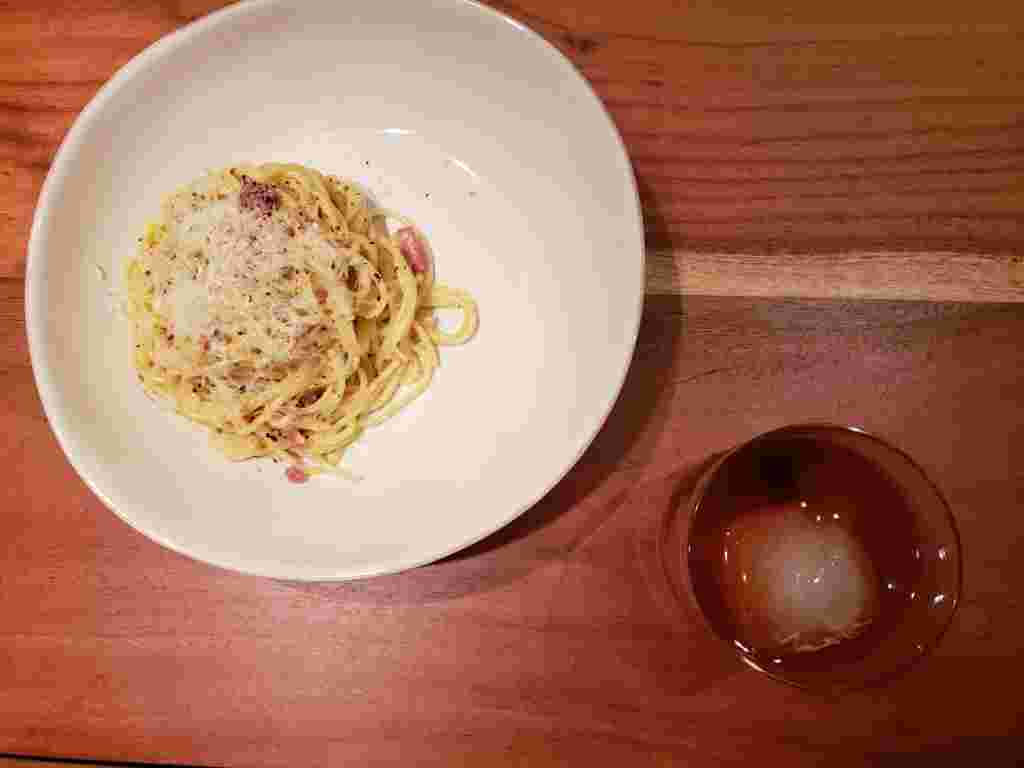
I lived in Italy for six months when I was 23 years old, because, well, Italy. I was out of college with not that many employable skills (having majored in English), and I basically decided that Italy was as good a place as any to plunk down and think about the rest of my life. I taught English in middle schools, evening classes, and corporate offices. I was in love with the country, the language, the Mediterranean sunshine, and the mountains. But of course, what I most loved was the food. I basically ate my way through Italy. I never met a pizza or a pasta I didn’t immediately scarf down. I hunted down regional specialties with eagle-eyed precision, sampling pesto in Genoa, bolognese in Bologna, granita in Sicily, and prosciutto in Parma. Probably every other day, I treated myself to a gelato – pistachio and strawberry (fragola) were my go-to’s. I dunked Mulino Bianco cookies in cappuccinos for breakfast and bought focaccia studded with salty olives and sweet onions for lunch. I discovered buffalo mozzarella and new food trends that tickled me to the core with delight – apparently, the Sicilians started the trend of eating brioche con gelato (which is basically a brioche bun stuffed with gelato) for breakfast, and I never wanted anything else with my cappuccino.
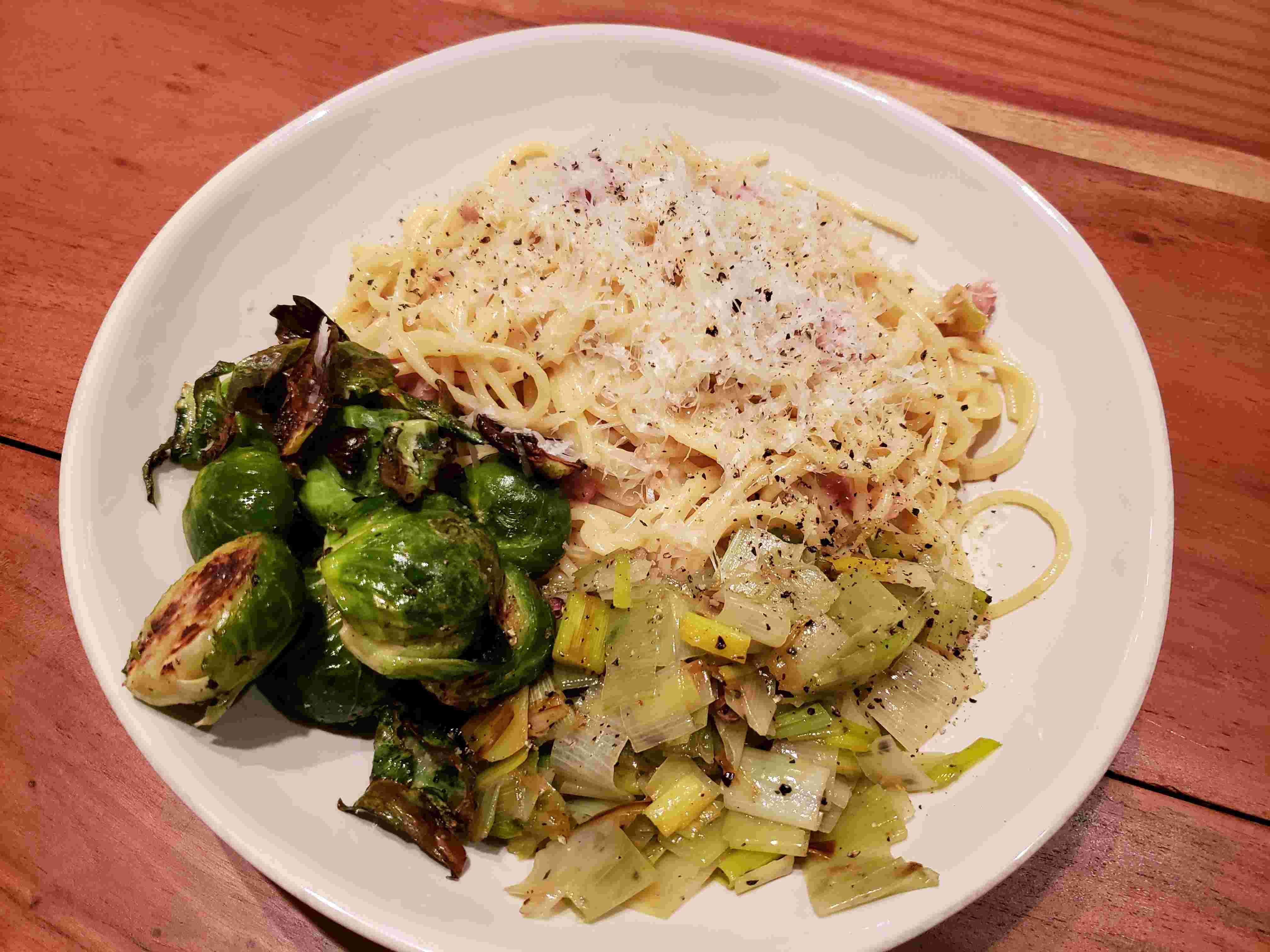
The food is ridiculous in Italy. Honestly, every trip to the supermarket felt like a culinary adventure. I would buy the pre-made, prepackaged Barilla brand raviolis in the refrigerated section, and they would taste better than any of the pastas I could remember eating in the States. Sometimes I went to people’s houses for English lessons, and sometimes they would offer me lunch – I still remember a pasta dish with soft, wilted zucchini and charred potatoes that was so simple, yet so addictive. The last time I was in Italy was probably over 10 years ago, and I am way overdue for a food tour.
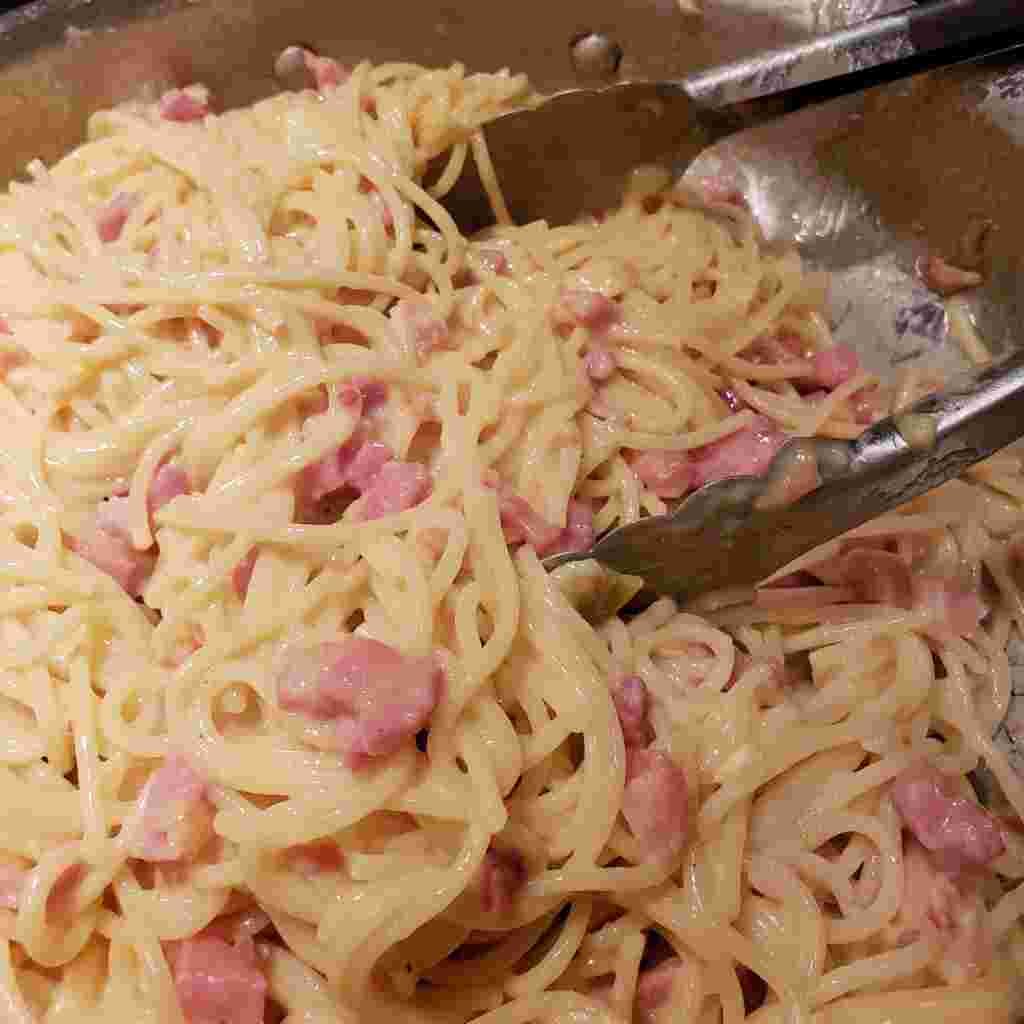
The thing I love about Italian cooking is that it often focuses on only a few ingredients, and prizes quality of those ingredients above elaborate preparation or technique. What this translates to is straightforward, simple weeknight cooking! I really love this spaghetti carbonara because it is easy, yet creamy, rich, and delicious. It’s also fairly foolproof – the worse that will happen is that you might cook the eggs instead of coating the pasta with them, but apparently scrambled eggs and pasta are also a thing in Italy, and it sounds delicious to me, so I don’t think I would even mind if this happened. So go ahead – find the most gourmet pancetta, cheese, and butter you can, pour some wine, and get an Italian feast together in under 30 minutes.
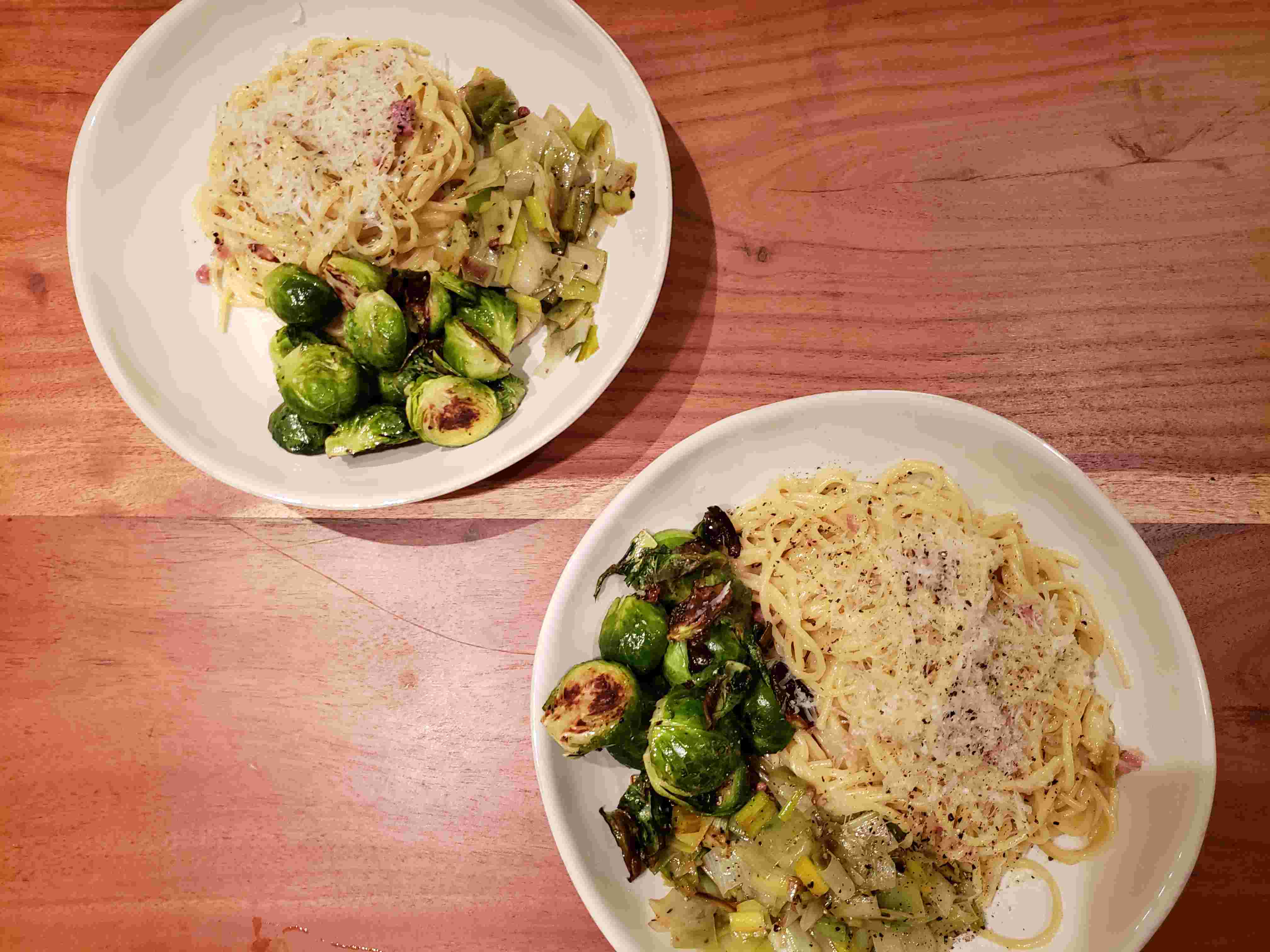
We personally ate this with sautéed leeks and roasted brussels sprouts, and one of James’s old fashioneds. Time to dinner, including all sides: about 45 minutes.
| Servings | Fuss Factor | Total Time | Prep Time | Cook Time |
|---|---|---|---|---|
| 4 | 1 | 30 minutes | 10-15 minutes | 15 minutes |
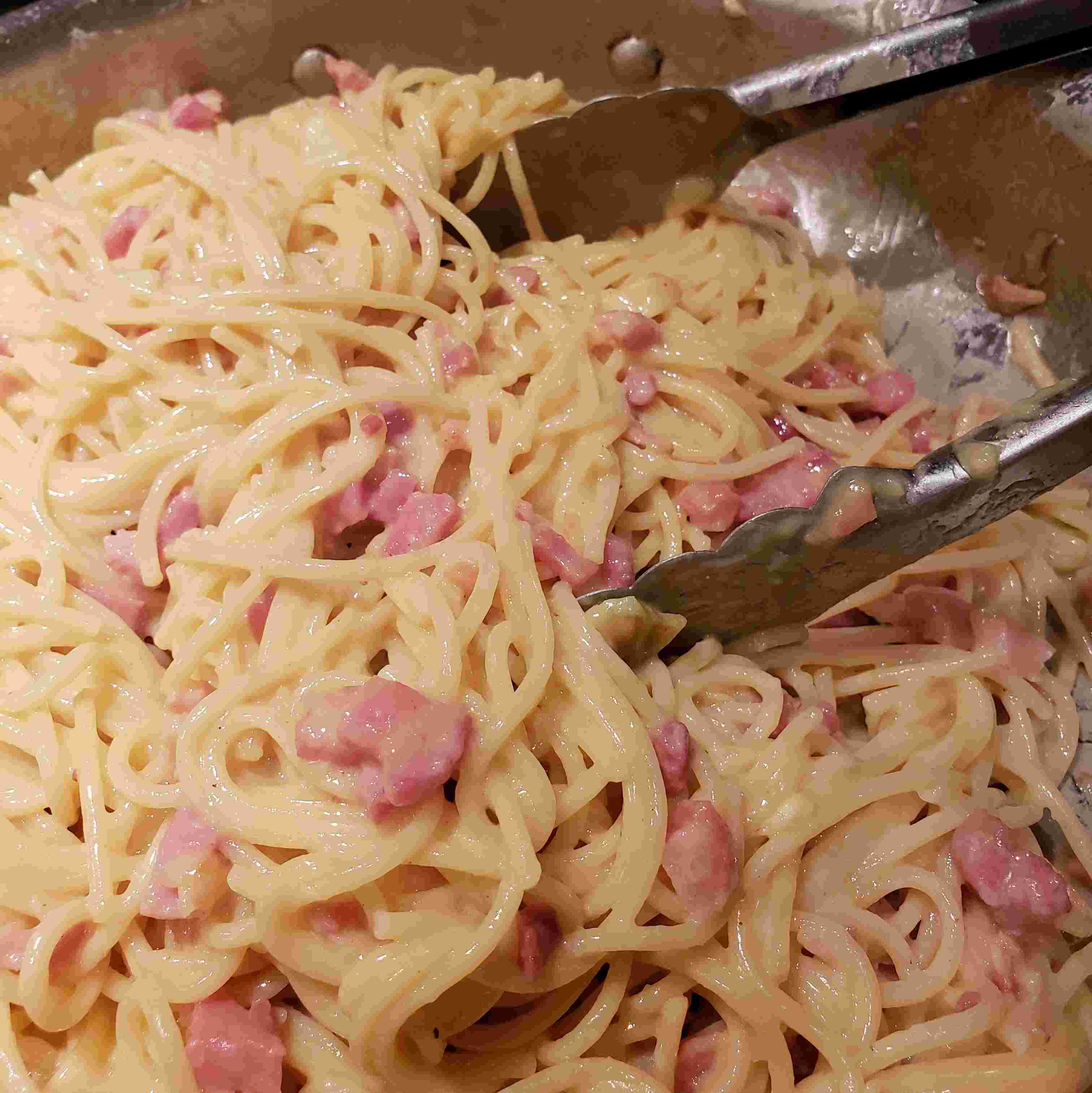
Spaghetti Carbonara
Source: BBC Good Food
Ingredients
- 4 ounces pancetta
- 3 large eggs
- 1 3/4 ounces grated pecorino cheese (about 1/2 packed cup)
- 1 3/4 ounces grated parmesan cheese (about 1/2 packed cup)
- 12 ounces spaghetti
- 1/4 cup unsalted butter (sometimes I use half butter, half olive oil to make the dish a bit lighter)
- 4 cloves garlic, peeled and smashed
- Salt and lots of freshly grated black pepper
Instructions
-
Put a large pot of water on to boil. If the pancetta isn’t chopped already, remove any rind and chop into small cubes about 1/4-inch across. Beat the eggs in a medium bowl. Add the two cheeses to the eggs, season with lots of freshly grated black pepper, and stir to combine. Set aside.
-
Salt the pasta water liberally. When the water has boiled, add the spaghetti and stir so that the noodles don’t stick together. Cook for about 10 minutes, or until done.
-
While the pasta is cooking, start the pancetta. Melt the butter in a large skillet over medium heat, and add the pancetta and garlic. Cook on medium heat for about 5 minutes, stirring often, until the pancetta is golden and crisp. You can now discard the garlic, or, if you’re like me and enjoy eating large garlic cloves drenched in butter, feel free to leave them in. (I sometimes chop the garlic coarsely, and then just leave the pieces in. The butter really mellows their flavor, and they become quite flavorful)
-
After the pancetta has browned, turn the heat to low. Drain the pasta when it’s cooked, but reserve 1 cup or so of the pasta water. Add the pasta to the pancetta in the skillet. Alternatively, you can transfer the pasta straight from the pot to the skillet with a pasta fork or tongs. Either way, don’t worry if pasta water drops in the pan as well (you want this to happen).
-
Remove the skillet of spaghetti and pancetta from the heat. Pour in the egg and cheese mixture, and, moving quickly, use tongs or a long fork to toss the spaghetti and pancetta with the egg mixture. You’ll want to move and toss the pasta around quickly so that the egg mixture doesn’t cook and scramble. Add some splashes of the pasta water to thin out the cheese sauce to your desired consistency. I would start with about 1/4 cup and add more if needed – I usually end up using about 1/2 cup. The pasta should look silky, smooth, and glossy, and the noodles should slide about fairly freely. If the dish looks dry and stiff, just add more pasta water and mix. Season with a little salt, if needed, and lots of freshly grated black pepper. Toss until everything is combined.
-
Serve immediately (in warmed bowls, if you're being fancy; spaghetti carbonara cools quite rapidly), topped with more freshly grated black pepper and grated cheese, if you prefer.


